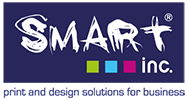What is Commercial Printing?
Commercial printing is an essential process for businesses and organisations around the world. It involves producing printed materials in large quantities for marketing, advertising, and branding using specialised techniques, materials, and equipment to create products including brochures, flyers, posters, and business cards.
Commercial printing has developed a high-demand over recent years as it presents several benefits to businesses, such as cost-effectiveness, customisation and quality control. By using commercial printing services, businesses can save money on printing costs, as commercial printers have the necessary equipment and expertise to produce high-quality prints at a lower-cost per-unit.
On top of the lower cost-per-unit, commercial printing is also a highly customisable print solution. This means that businesses can create unique designs that reflect their brand identity and really resonate with their audience.
Commercial printing can be used for a number of materials including leaflets, brochures, business cards and more.
What is the difference between commercial printing and digital printing?
There are two primary types of printing: commercial and digital. Commercial printing is a traditional printing method that involves printing on large presses using plates. As mentioned above, it’s suitable for printing large volumes of high-quality materials such as brochures, flyers, and business cards.
Digital printing, however, is a modern printing method that involves printing directly from digital files using a printer. This type of printing is suitable for printing smaller volumes of materials such as posters, banners, and leaflets.
The commercial printing industry has been around for a long time and has evolved with technology. Today, commercial printers use state-of-the-art technology to produce high-quality prints at a fast pace.
By incorporating new aspects such as LED UV printing and UV light, commercial printing has become faster, more efficient, and more environmentally friendly than ever before.
What is the commercial printing process?
The commercial printing process consists of three primary stages: prepress, press, and post-press and finishing.
Prepress
Prepress is the first stage of the commercial printing process, and this is where all of the planning and preparation occur.
During this stage, the design is created and prepared for printing. The design is then turned into a printing plate, which is used to transfer the design onto the paper.
Prepress also involves setting up the printing press, selecting the paper and ink, and creating the layout for the final product.
Press
The press stage is where the printing actually takes place.
The printing press is set up, and the printing plates are loaded onto the press. The paper is then fed through the press, and the ink is transferred from the printing plate onto the paper.
The printing process can use various printing techniques, such as offset printing and litho printing.
Post-Press and Finishing
The final stage of the commercial printing process is post-press and finishing.
During this stage, the printed materials are finished and prepared for distribution. Finishing can include cutting, folding, binding, laminating, and more.
The finishing process can also involve automation and workflow solutions, as well as software solutions to ensure that the final product is of high quality.
What are the different types of commercial printing?
The most common types of printing used by commercial printers are:
- Offset Lithography
- Flexography
- Digital Printing
- Large Format Printing
- Screen Printing
- 3D Printing
Find out more about the different types of commercial printing.
What are the different materials that you can use for your next printing project?
When it comes to commercial printing selecting the right materials is crucial. The right choice can make all the difference in the quality, durability and overall appeal of your final product. Here are some of the most common materials used:
Paper and cardstock
Paper and cardstock are the most common materials used in commercial printing. They come in various weights, colours, and finishes, making them versatile and suitable for a wide range of applications.
As the weight of the paper is measured in grams per square meter (gsm), the higher the gsm, the thicker and more durable the paper will be.
Common paper types used in commercial printing projects include:
- Glossy paper: This paper has a shiny finish and is ideal for printing high-quality images and photographs.
- Matte paper: This paper has a non-reflective finish and is suitable for printing text-heavy documents.
- Cardstock: This is a thicker and more durable type of paper that is commonly used for business cards, invitations, and postcards.
Plastic and synthetic materials
Plastic and synthetic materials are a great choice when printing products that need to be waterproof and durable. They’re commonly used for printing labels, stickers, and various packaging materials.
Popular types of plastic and synthetic materials used in commercial printing include:
- Vinyl: This is a durable and waterproof material that is commonly used for printing banners, signs, and stickers.
- Polyester: This is a synthetic material that is resistant to tearing, shrinking, and wrinkles. It is commonly used for printing clothing labels, tags, and banners.
Textiles
The term ‘textiles’ includes a variety of materials made from fibres and yarns that are very versatile and durable, meaning that they are an ideal choice for printing custom designs and logos. They are commonly used for printing t-shirts, bags, and other promotional products.
Common types of textiles used in commercial printing include:
- Cotton: This is a soft and breathable material that is ideal for printing t-shirts and other clothing items.
- Polyester: This is a synthetic material that is lightweight and durable. It is commonly used for printing sports jerseys and other athletic apparel.
What are the different types of products that commercial printing is commonly used for?
Marketing and promotional materials
Commercial printing is commonly used to produce high-quality marketing materials including brochures, flyers, business cards, newsletters, postcards, envelopes and more. As the design & printing process is highly customisable it’s become a cost-effective way for businesses to reach a wide audience with their promotional material.
Stationery and corporate materials
Commercial printing is also used to produce high-quality stationery and corporate materials such as letterheads, envelopes and business cards. In fact, there’s a huge amount of products available for commercial printing that are used every day by businesses all over the UK, including:
- Folders
- Brochures
- Magazines
- Flyers/leaflets
- Stickers
- NCR pads
- And more!
What is NCR paper used for?
NCR, or ‘no carbon required’, is a type of paper commonly used within business operations. It allows the user to duplicate their handwritten notes or documents to a sheet lying underneath their sheet of paper. Often used in within an office or workshop environment, this paper type can be a great time saver and prevent issues in mishandling of important notes or documents.
Because of the lower cost-per-unit, companies will factor in commercial printing to produce these materials at scale without utilising too much of their internal budget.
For help with your next commercial printing project contact our team today! With years of experience helping hundreds of businesses, we know how to help you deliver your project on time.
Categories
- Uncategorised (19)
Recent Posts
Recent Comments
Archives
Categories
Categories
- Uncategorised (19)



